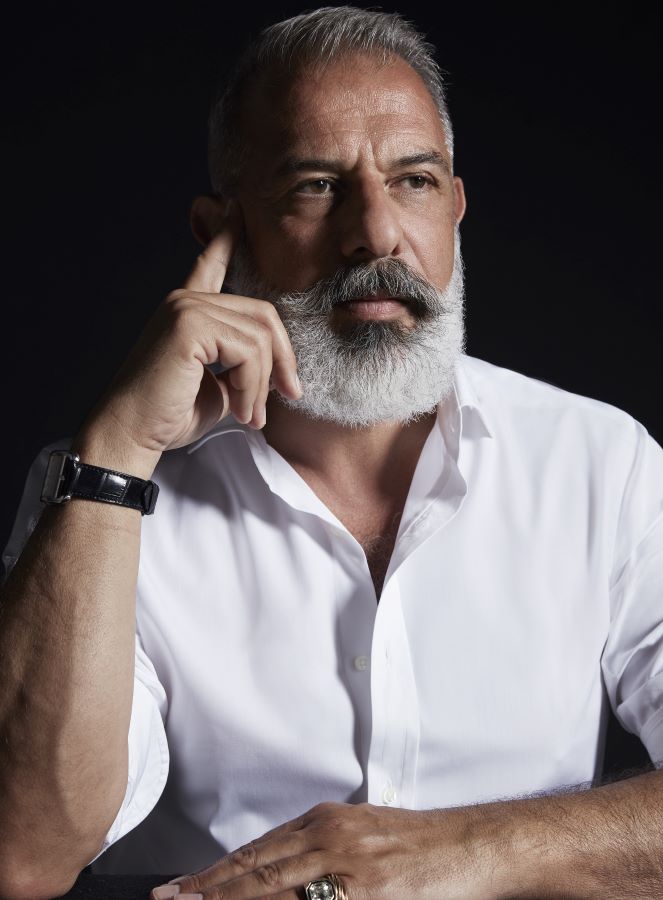CAPRI: Inside the tranquil surroundings of the 14th-century monastery of Certosa di San Giacomo on the Italian island of Capri, Lebanese Paris-based interior designer Chahan Minassian recently presented a display of furniture.
His showcase was inspired by the shapes, materials, and experience of the Mediterranean which the Certosa, as it is often called, overlooks.
Minassian’s presentation – the first time his Paris-based Chahan Gallery had participated in the art and design fair Nomad Capri – was held in the former Carthusian monastery with its views of the Tyrrhenian Sea, part of the Mediterranean.

Lebanese Paris-based interior designer Chahan Minassian. (Supplied)
Titled “Cruise,” it showcased an arrangement of furniture and artwork colored with hues of turquoise, bronze, blues, and creams, evocative of Capri’s dreamy maritime landscapes.
The pieces on show, which married the realms of art and design through sculptural works, paintings, and furniture, included new works by Marie Khouri and Antoinette Faragallah, as well as a Canal Grande table in Murano glass designed by Minassian, reflective of Venetian styles, alongside Emilio Martinez’s abstract expressionist painting “Mother of Us” from 2014 to 2015.
Born in 1961 to an Armenian family in Lebanon and based in Paris since 1976, Minassian has become known for his sumptuous, artful, and harmonious interior designs which include the Hotel de Crillon in Paris.
He is also an antique dealer and runs Chahan Gallery on Rue de Lille in Paris and is dedicated to his lighting designs and furniture. For the Venice Biennale in 2019 he curated the Abbazia di San Gregorio in partnership with Colnaghi Gallery.
He is currently working on a range of projects that include a palazzo in Venice, townhouses in London, chalets in Kitzbuhel and Gstaad, a city house in Geneva, as well as prestigious apartments in New York, private jets, and various other retail spaces in Paris.
Minassian told Arab News: “I express myself through my interior design. Originally, I was an assembleur, which is what they used to call decorators in the 1930s who would bring to life the soul of the house. The place I design is what inspires me. Either we follow it architecturally or let the place inspire me how to design.”
His presentation in Capri serendipitously juxtaposed the cream-colored objects of Khouri, born in Egypt and raised in Lebanon, that resemble a shell, and the organic and textural totems of California-based Faragallah, represented by Minassian’s gallery, with his own creations.
On the terrace the works, colored in hues of light blue, turquoise, and cream, married the architecture of the monastery with the view of the sea below and its surrounding spurs of rocks shooting up from the water.
He paired the designs of Khouri and Faragallah with 1950s elements, featuring eloquent curved lines and colored with a touch of turquoise.
“I also like to give a new life to objects from the past. Green, teal, and turquoise shine through these works, and couple with their undulating lines to evoke the character of the sea,” he added.












